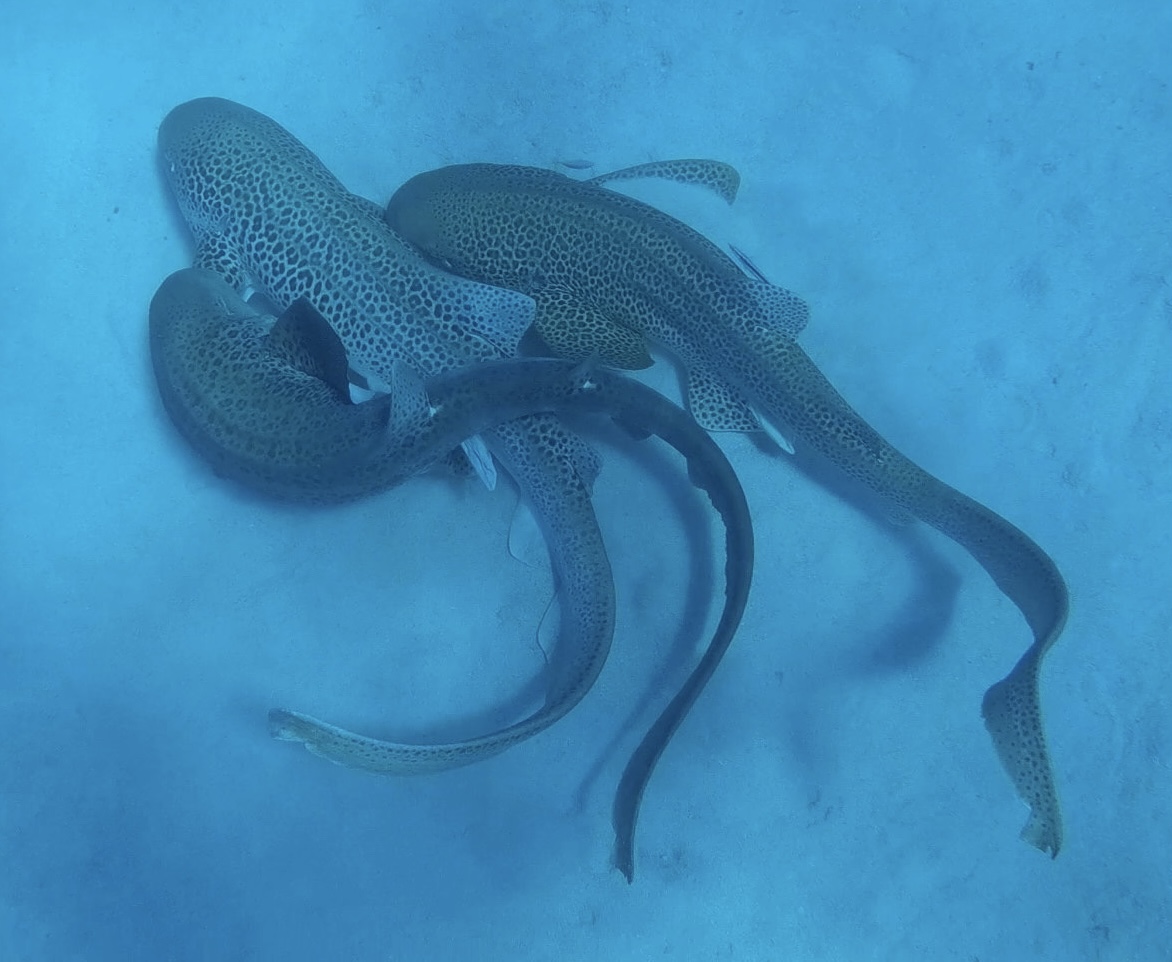Media release
From:
A University of the Sunshine Coast researcher has caught on camera and documented for the first time a rare – and rather risqué – shark mating sequence in the wild.
In a surprise discovery, UniSC’s Dr Hugo Lassauce found that it takes more than two leopard sharks to tango in the crystal blue waters off New Caledonia.
The “threesome” between two males and one female of the globally endangered species is delicately outlined in a paper just published in the Journal of Ethology.
It is believed to be the world’s first recorded and scientifically documented observation of two males of the Indo-Pacific species copulating in quick succession with a female. All three sharks were about 2.3m long.
Dr Lassauce, a marine biologist and ecologist who collaborates with Noumea’s Aquarium des Lagons, said the team celebrated the scientific and conservation significance of his video as soon as he swam back to the boat.
“It’s rare to witness sharks mating in the wild, but to see it with an endangered species – and film the event – was so exciting that we just started cheering,” he said.
The postdoctoral researcher had snorkelled with the sharks 15km off the New Caledonian coast every week for a year as part of the aquarium’s monitoring program.
“I’d seen males swimming fast after females before and I’d arrived ‘on the scene’ just after a male and female separated, but I’d never seen the whole sequence,” he said.
“Then while I was surveying this particular aggregation of leopard sharks, I spotted a female with two males grasping her pectoral fins on the sand below me.”
“I told my colleague to take the boat away to avoid disturbance and I started waiting on the surface, looking down at the sharks almost motionless on the sea floor.
“I waited an hour, freezing in the water, but finally they started swimming up. It was over quickly for both males, one after the other. The first took 63 seconds, the other 47.
“Then the males lost all their energy and lay immobile on the bottom while the female swam away actively.”
Both males were identified as previous visitors to the site, as far back as 2018.
Listed as endangered by the International Union for Conservation of Nature (IUCN), the Stegostoma tigrinum has primarily been studied in captivity, with little information on its natural mating behaviour or environmental influences in the wild.
Also known as a zebra shark because pups are born with stripes that gradually turn into spots, the species is found in coastal waters across the Indo-West Pacific region, from Africa’s east coast to the Pacific Islands and including Australia.
The paper documenting the finding is co-authored by UniSC Senior Research Fellow Dr Christine Dudgeon and Aquarium des Lagons’ Director and chief scientist Dr Olivier Chateau and research assistant Hugues Gossuin.
Dr Dudgeon, a marine ecology and evolution expert renowned for her work with leopard sharks over two decades, said the footage offered great insights into the mostly solitary animals.
“This evidence suggests the site in New Caledonia is a critical mating habitat, which can inform management and conservation strategies as well as help us understand population dynamics and reproductive behaviours more widely,” she said.
She said the findings could also aid artificial insemination research aimed at helping “rewild” the species, currently underway between countries including Australia.
“It’s surprising and fascinating that two males were involved sequentially on this occasion,” she said.
“From a genetic diversity perspective, we want to find out how many fathers contribute to the batches of eggs laid each year by females.”



 Australia; Pacific; QLD
Australia; Pacific; QLD



